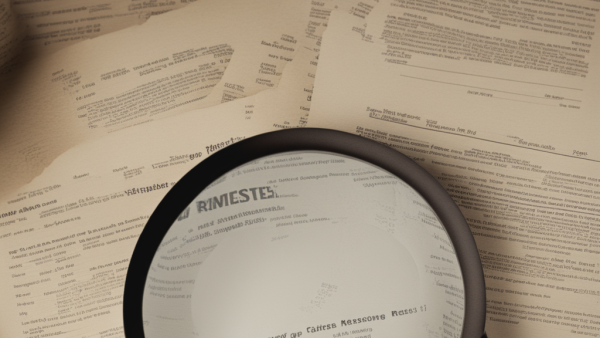
by Sam Franklin | October 06, 2022 | 14 min read
The true cost of eCommerce returns: Stats and best practices for minimising loss
Get fundedLast updated: October 07, 2022
More than 200 billion dollars (~180 billion GBP) worth of merchandise was returned in 2021, according to a study by Appriss Retail and the National Retail Foundation, amounting to approximately 20% of total online sales.
In addition, according to a consumer survey, around 25% of customers believe they’re returning between 5% and 15% of their purchases. A small percentage even said they return more than half of what they buy online. The numbers worsen during holidays like Christmas when it’s estimated that 2 out of 3 consumers return a gift or purchase. It’s especially the case with apparel, electronics, and jewellery items where return rates are high (the average eCommerce return rate for apparel is around 10%).
Returns cost businesses about 66% of the original item’s price. Even if the item is returned in good condition, the entire returns process will still be costly because of the required labour, transport, and inspection (the business usually shoulders the return cost).
Because of those alarming numbers, it’s crucial to know how to reduce return rates and properly handle customer returns. Once you accomplish this, your business can secure greater profits and more long-term customers. This will also help you increase customer satisfaction as well as strengthen your brand and reputation.
Table of contents
- Impact of eCommerce returns
- Reducing eCommerce returns
- Best practices in handling an eCommerce return
- Conclusion
Impact of eCommerce returns
First, let’s talk about why returns are much more expensive than we realise.
With the rapid growth of eCommerce, especially in the UK, where internet total retail sales went up by 10.8% in 2021 compared to 2020, the return rates may get even higher, especially during and after the holiday season.
Big retailers and well-established eCommerce businesses will survive despite those numbers. However, it’s totally different when it comes to individual businesses. Aside from the refunds, these businesses also suffer other immediate and long-term losses that might hurt their brand and bottom line.
True cost of returns and refunds
eCommerce returns result in the following:
Loss of customers
Damaged brand and reputation
Higher spend on acquiring customers
Lower customer lifetime value
Let’s look at these in more detail.
Loss of customers
First, each customer return and refund might make you lose customer loyalty. Customers may never come back because of the disappointing experience. They could have bought more goods from you in the coming months and years, but instead, you lost the opportunity.
Repeat customers can make up almost half of total retail sales. If those same customers buy again and again from that business, the business saves on acquisition costs, and it increases the customer’s lifetime value (more on this later).
Although it surely helps to continuously acquire new customers, it also helps to pay attention to retaining your present customers because repeat purchases could become a huge percentage of your total monthly sales.
Your long-term customers may also be more receptive to your new products and offers because they already know and trust you. However, customer returns might ruin that, and you will miss out on future sales and revenue (and it’s getting more expensive and highly competitive to acquire a new customer these days).
Damaged reputation
Aside from losing a specific customer, you might also lose others because of a bad review. A single review could be enough to prevent potential customers from finalising their online purchase from you. The reputational damage might become permanent and turn away potential customers. This might also prevent referrals because fewer customers will be pointing to you when someone asks them where to buy a particular item.
Higher customer acquisition and marketing costs
Suppose you’re spending £10 through online ads to acquire a customer. What happens if that customer returns the product and asks for a refund?
First, you lose that £10 and might never get it back because the customer is gone forever. And if your profit margins are low, you might have actually suffered a net loss because of the returns. For instance, if your profit for the item is around £20 and you spent £10 in online ads to acquire that customer plus other costs in inspection, handling, shipping and overall reverse logistics, you’ll realise that it’s far from worth it. Worse, you lose future sales and revenue because the customer might never return to do business with you.
In addition, you have to spend again on marketing to replace that lost customer. It’s estimated that the average customer acquisition cost can range from £17 to as high as £400. The cost per click and impression of online ads have become more expensive too. For example, Google Ads this year are 75% more expensive than a year ago (digital ads are also getting more expensive on Amazon and other platforms).
When you experience frequent returns and lose customers, you might not even achieve the breakeven point because of your high customer acquisition costs and continuous effort and expenses to bring in new customers.
Lower customer lifetime value
The customer lifetime value (CLV) tells you how much revenue each customer brings to your business. A higher CLV often means the customers are loyal and making repeat purchases. They might also buy high-value products or goods, meaning high margins. On the other hand, a low CLV might mean the customer only bought a few times from your eCommerce store. The relationship was short, and it didn’t bring much revenue to your business.
A low CLV might hurt your business because your revenues will be low, and you will need to increase your customer acquisition costs (this is what you need to spend to acquire each customer through ads and other marketing channels).
Online retailers aim for a more than 3:1 LTV to CAC ratio (LTV is at least 3x the CAC). With this ratio, businesses can grow faster and stay profitable. However, if the CAC becomes too high and the LTV gets lower because of frequent returns and permanent loss of customers, your business will struggle to grow.
True cost of returns and refunds example
Let’s see what happens when a customer returns an item worth £100 (your profit was supposed to be £20, and you spent £10 through ads to acquire each customer):
You generate no revenue, and you immediately lose the £10 net profit.
That customer might never come back.
You might lose the future sales and revenue that customer was supposed to bring in the future.
You’ll have to spend another £10 (your customer acquisition cost) to replace that customer.
You might spend more on inspection, labour, shipping and other reverse logistics costs.
Your eCommerce store may receive a bad review because of the customer’s unpleasant experience.
You miss out on sales because potential customers change their minds after reading bad reviews.
In other words, a single return and refund could equal hundreds or even thousands of pounds in lost revenue and profits. Because of this high cost of returns, it’s crucial to find ways to reduce customer returns. This will help increase your revenue, profits, and number of customers in the coming months and years.
Reducing eCommerce returns
There are many ways to reduce your return rate. But first, we need to identify why customers return their eCommerce purchases. This way, you’ll know where to focus your efforts on reducing the number of returns.
Why do customers return their eCommerce purchases?
High return rates often happen in eCommerce businesses that sell clothing items, shoes, and accessories because of a mismatch between expectations and reality, especially because of the following:
The item is the wrong size (e.g. shirt was too small).
The item is the wrong colour (or the item’s colour doesn’t exactly match what you had in mind).
The item doesn’t meet expectations (whether in terms of quality or performance).
In contrast, if customers bought the product at a brick-and-mortar store, they could pick the correct size and colour. As a result, physical store purchases have lower return rates than eCommerce stores.
Aside from the wrong size and colour, other reasons for customer returns include:
“I accidentally ordered the wrong item.”
“I found the item at a better price elsewhere.”
“I just don’t want the product anymore.”
“The product was damaged when I received it.”
“Item has missing parts/accessories.”
“Item not as described on the website.”
Of these several reasons, according to a survey, the most common ones are:
“Item didn’t fit.”
“Item was damaged or defective.”
“Item doesn’t match the description.”
How to reduce product returns
Now you know the most common reasons for customer returns, you can better respond to those reasons and concerns by doing the following:
Including a detailed size guide
Adding clear photos of the item
Ensuring accurate and complete details in your product descriptions
Encouraging customers to leave a review (up to 97% of consumers consult product reviews before buying)
The goal is to help your customers make the correct purchase decision, preventing the likelihood of customer returns.
Let’s look at the above in more detail.
Adding a size guide to your eCommerce website
As mentioned, one of the most common reasons for customer returns is “the item didn’t fit”. One way to prevent this is by including a clear sizing chart or guide on your item pages. An incorrect or impossible-to-find sizing chart can repel customers or nudge them to buy two or three sizes (once they receive the item, they’ll only keep one and return the others).
To prevent this and help customers choose the item with the right fit, you can start by making the sizing chart easy to find. It’s even ideal that the chart appears as a pop-up so that customers won’t have to search for the size guide. Some businesses even go as far as using virtual reality or augmented reality technology to better guide their customers.
It also helps to give your customers some perspective about your item’s size and dimensions. You can do this by adding a photo of the item (as well as some measurements or dimensions) and someone wearing or using it. This will help customers better visualise the item and know if it’s the right fit for them.
Adding clear photos and visuals
More than 80% of customers surveyed say that a clear representation of the product helps them with their online purchase decision. A clear representation can help set the right expectations because the customer can get a clear idea of the product and have a better chance of buying the correct item.
To give customers a clear idea about your product, always show the item from all sides and angles. Use a white background for your product images and only upload high-resolution photos. This way, customers can zoom in and even see the tiniest details of your product. This can help bridge the gap between seeing the product online and inspecting it up close and in person. The goal here is to let customers see the entirety of your product.
Ensuring complete and accurate product descriptions
Aside from the item’s photos, customers also look at product descriptions before finalising online purchases.
Product descriptions strongly influence whether customers will buy your product or not. Customers want to make an informed decision (especially if returns are inconvenient or there’s a price to pay). A detailed product description can help customers make the right purchase decision and know for sure if the product suits their current requirements. In the product description, you should include/highlight the following:
Best applications of your product (what’s it for?)
Your product’s unique properties
Features and benefits of using the product
Note that the product description is often a text field only with a limited number of characters. Because of this constraint, you should ensure that the most important features of your product are stated and that your customers can instantly see what sets you apart from the competition.
Although customers always look at the item’s price first and then might go straight to the ratings and reviews, they will still read and review the product description before they finalise their purchase. It’s especially the case with high-value items such as electronic and automotive products.
Encouraging customers to leave a review
More than 90% of customers hesitate to buy a product if it has no reviews or negative ones. But if potential customers see positive reviews, they become more likely to buy the product. For example, displayed reviews can increase the conversion rate by 190% for lower-priced products and 380% for higher-priced products.
Reviews also provide helpful information to potential customers. Positive reviews might detail what previous customers love about the product and why it’s perfect for them. These reviews might even include photos of how they’re wearing or using the item. Some of those photos might capture the attention of your potential customers and persuade them to buy (perhaps the photos show a use case highly similar to their plans).
On the other hand, negative reviews might help some customers realise that the product is not for them (it doesn’t fit their requirements), and they won’t buy it as a result. This will spare them from disappointment and prevent an eCommerce return from happening. You’ll lose sales because of the negative reviews, but these can also help some of your potential customers make a truly informed decision.
To encourage your customers to leave a review, you can send them a follow-up email asking if they love your product and if they’d leave a review. You can accomplish this at scale through email marketing automation campaigns or just include a review link on the checkout and thank you pages. You have to make it easy for your customers to leave a review (e.g. in just 2 or 3 clicks and they’re done).
It also helps to create incentives to encourage more of your customers to leave a review. You can include a discount or coupon code for their next purchase. You can also use a gift card or let your customers earn points for a chance to win a prize after they send their reviews.
Best practices in handling an eCommerce return
Despite your best efforts, eCommerce returns are inevitable (especially during the holiday season, where 10% of all sales are expected to be returned). It seems it’s a built-in feature in retail and eCommerce because a few customers might still make the wrong purchase despite the detailed product description, clear photos, positive reviews, superior features, and quality of your merchandise.
Earlier, we talked about the huge losses from customer returns (including the permanent loss of customers). Fortunately, some of your customers might still continue doing business with you if the overall experience is positive and smooth. If the return process is easy and you’re always friendly and responsive, this might stop them from leaving a bad review or even make them feel that your business is still worth buying from in the future.
To make the return process quick and simple, here are some things you could do:
Have a hassle-free “no questions asked” return policy
Allow customers to return the item in-store (62% of shoppers are more likely to shop online if they can return an item in-store)
Provide free return shipping (76% of customers surveyed wants this)
Include return labels in every order
It also helps to consider giving an exchange instead of a refund. Although you’ll pay the shipping and labour costs and there’s no additional revenue or profit, the benefit is that you won’t lose the customer. The customer might continue buying from you and raise your customer lifetime value which can fuel your business growth.
Conclusion
Returns are a part of doing business, especially in eCommerce, where customers are unable to see and inspect the item in person before buying it. Some losses because of an eCommerce return are expected because of plain mistakes and mismatched expectations of online shopping. Your goal is to minimise the return rates and your losses so that your business will continue to survive and thrive.
You can minimise the return rates and losses by helping customers make the correct purchase decisions (by having accurate and detailed product descriptions, clear photos, and a helpful sizing guide and chart). Ratings and reviews can also help potential customers make the right decision because of more information presented.
Also, note that each sale is not just a one-time transaction but an ongoing relationship and experience for your customer. It doesn’t end with the payment and delivery of the item to your customer’s doorstep. The after-sale experience, whether they return or accept the product, affects how they perceive your business and whether they will buy again from you in the future.
Written by

Sam founded his first startup back in 2010 and has since been building startups in the Content Marketing, SEO, eCommerce and SaaS verticals. Sam is a generalist with deep knowledge of lead generation and scaling acquisition and sales.


